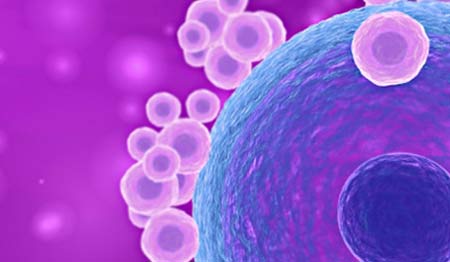Understanding proteins involved in fertility could help boost IVF success
Women who have difficulty getting pregnant often turn to in-vitro fertilization (IVF), but it doesn’t always work. Now scientists are taking a new approach to improve the technique by studying the proteins that could help ready a uterus for an embryo to implant in its wall. Their report could help researchers develop a new treatment that could potentially increase the success rate of IVF. The study appears in ACS’ Journal of Proteome Research.
Chen Xu, Hu Zhou and colleagues note that nearly 50 million couples worldwide require some kind of medical intervention to conceive. Among the most common procedures is IVF, but on average, only about one-third of all attempts lead to pregnancy. In the majority of cases that fail, the embryo doesn’t attach to the uterine wall. Why this happens has largely remained a mystery. To address this knowledge gap, Xu and Zhou’s team looked at the proteins that could play a role in this process.
The researchers tested samples of the inner uterine membrane called the endometrium from twelve women. They identified more than 2,000 proteins and found that the levels of more than 300 of them varied significantly depending on whether the endometrium was ready for embryo implantation. Boosting or reducing the levels of some of these proteins may increase the possibility that an embryo would implant and therefore increase the IVF success rate. The researchers say the findings could also help them improve treatment of endometrium-related diseases.
###
The authors acknowledge funding from the National Natural Science Foundation of China, the Chinese Academy of Sciences, the Ministry of Science and Technology of China and the Shanghai Municipal Education Commission.
The American Chemical Society is a nonprofit organization chartered by the U.S. Congress. With more than 158,000 members, ACS is the world’s largest scientific society and a global leader in providing access to chemistry-related research through its multiple databases, peer-reviewed journals and scientific conferences. Its main offices are in Washington, D.C., and Columbus, Ohio.
 To automatically receive news releases from the American Chemical Society, contact .(JavaScript must be enabled to view this email address).
To automatically receive news releases from the American Chemical Society, contact .(JavaScript must be enabled to view this email address).
As the rate of first-time moms over age 35 rises-it’s up to 15 percent in the U.S. now-so does the country’s reliance on in-vitro fertilization. In fact, what was once a last-resort procedure has become increasingly routine: In 2012, U.S. doctors performed 165,172 fertility procedures-more than 99 percent of which were IVF, according to the most recent data from the Society for Assisted Reproductive Technology, reflecting a 7 percent increase over 2011.
And how many of those procedures actually lead to deliveries? Among women younger than 35, the data shows that 46 percent of the embryo transfers resulted in live births. That number drops to 38 percent for women ages 35 to 37, and 28 percent for women ages 38 to 40.
Although those stats may sound discouraging, consider this: Only 55 percent of “chromosomally normal” embryos successfully become a baby, “whether you make them at home in bed, or whether you make them in a lab,” Jamie Grifo, M.D., program director of the NYU Fertility Center, told Yahoo Health. “It’s mostly not under your control. It’s about the luck of getting a good embryo.”
###
Michael Bernstein
.(JavaScript must be enabled to view this email address)
202-872-6042
American Chemical Society
Journal
Journal of Proteome Research